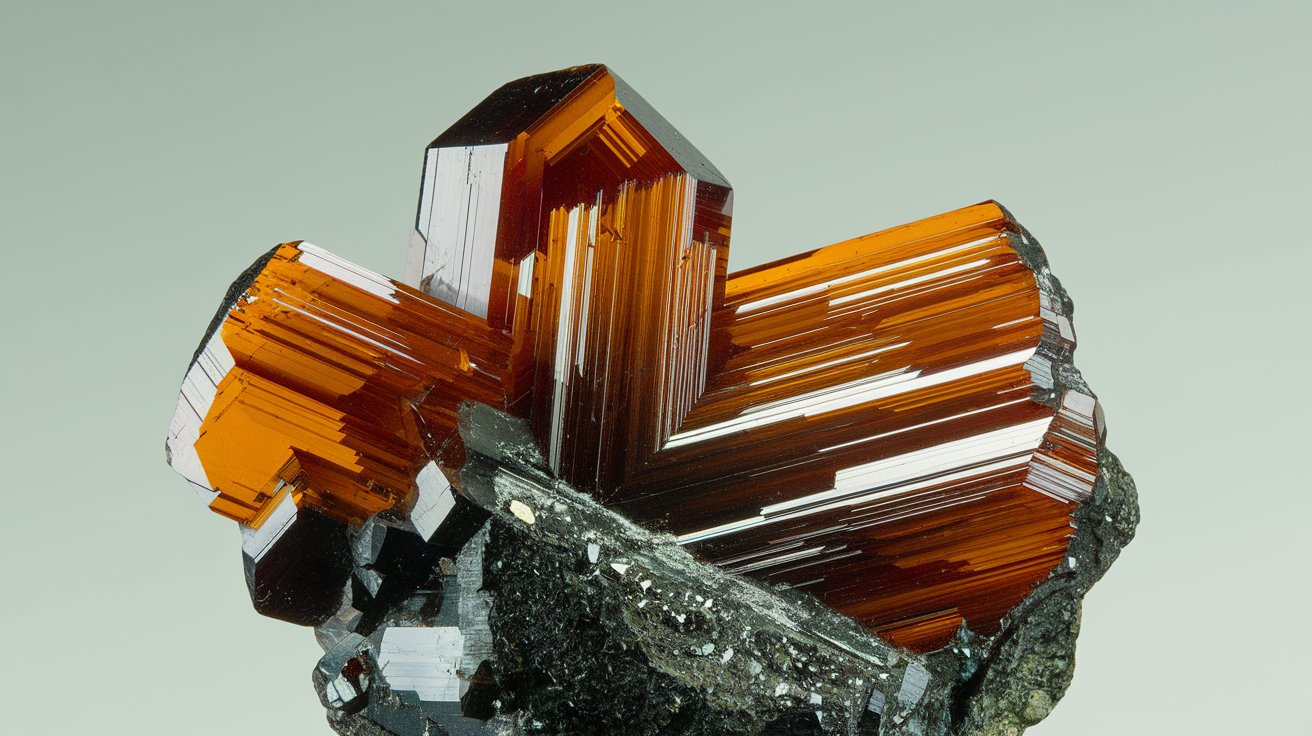
What makes Algodonite so special? Algodonite, a rare copper arsenide mineral, captivates mineral enthusiasts and geologists alike. First found in Chile, its name reflects this origin. With a chemical formula of Cu6As, it boasts a unique hexagonal crystal system and metallic lustre. Its hardness of 4 on the Mohs scale and specific gravity of 8.38 highlight its distinct physical properties. Often discovered in copper deposits, especially in the Michigan copper district, algodonite forms under high pressure and temperature conditions. Its rarity and association with other copper arsenide minerals like domeykite make it a prized find for collectors and researchers.
Key Takeaways:
- Algodonite, a rare mineral found in Chile and the Michigan copper district, is sought after by collectors for its unique properties and cultural significance, offering insights into Earth's geological history.
- With its metallic lustre and hexagonal crystal system, algodonite's rarity and distribution make it a valuable subject for scientific research and education, shedding light on the complex geological processes that shape our planet.
Discovery and Composition
Algodonite is a rare mineral that has intrigued scientists and collectors alike. Its unique properties and formation processes make it a subject of great interest.
-
Discovery: Algodonite was first discovered in Chile, giving it a unique historical and geographical significance.
-
Chemical Formula: The chemical formula for algodonite is Cu6As, indicating it is a copper arsenide mineral.
-
Composition: Algodonite consists of copper and arsenic, with a molecular weight of 456.20 grams per mole.
Physical Properties
Algodonite's physical characteristics set it apart from other minerals, making it a fascinating subject for study.
-
Crystal System: Algodonite crystallizes in a hexagonal crystal system, which is unusual among copper arsenide minerals.
-
Lustre: The lustre of algodonite is metallic, reflecting its composition of copper.
-
Hardness: The hardness of algodonite is 4 on the Mohs scale, making it relatively soft compared to other minerals.
-
Specific Gravity: The specific gravity of algodonite is 8.38, indicating it is denser than most common minerals.
Occurrence and Geological Setting
Understanding where and how algodonite forms can provide insights into its rarity and distribution.
-
Occurrence: Algodonite is found in copper deposits, particularly in regions with significant copper and arsenic mineralization. Notable occurrences include Chile and the Michigan copper district.
-
Michigan Copper District: Several occurrences of copper and nickel arsenides, including algodonite, have been reported in the Michigan copper district. These discoveries highlight the diversity of minerals found in this region.
-
Crystal Forms: Unusual among these finds has been the discovery of crystals of algodonite, which is a rare occurrence in the field of mineralogy.
-
Association with Other Minerals: Algodonite is often associated with other copper arsenide minerals such as domeykite and whitneyite. These minerals share similar chemical compositions but have distinct crystal structures.
-
Physical Properties: Algodonite exhibits a range of physical properties that make it unique among minerals. Its metallic lustre, hexagonal crystal system, and high specific gravity are notable characteristics.
Chemical Content and Formation
The chemical makeup and formation processes of algodonite are crucial to understanding its properties and occurrence.
-
Copper Content: Algodonite contains a significant amount of copper, with approximately 83.58% of its molecular weight attributed to copper.
-
Arsenic Content: The remaining portion of algodonite's molecular weight is attributed to arsenic, which plays a crucial role in its formation and properties.
-
Formation Processes: The formation of algodonite is closely linked to the geological processes that create copper deposits. These processes involve the interaction of copper and arsenic under high pressure and temperature conditions.
-
Geological Setting: Algodonite is typically found in hydrothermal veins and sedimentary rocks that have undergone significant metamorphism. These settings provide the necessary conditions for the formation of copper arsenide minerals.
Distribution and Rarity
Algodonite's rarity and distribution make it a sought-after mineral for collectors and researchers.
-
Distribution: While algodonite is relatively rare, it has been reported from various locations around the world. Its distribution is often linked to regions with significant copper mineralization.
-
Mineralogical Classification: Algodonite belongs to the class of sulfide minerals, specifically the copper arsenide group. This classification reflects its chemical composition and crystal structure.
-
Rarity: Due to its limited occurrences and specific geological conditions required for its formation, algodonite is considered a rare mineral in the field of mineralogy.
-
Collectibility: Algodonite is highly sought after by mineral collectors due to its unique properties and rarity. Its metallic lustre and hexagonal crystal system make it particularly attractive for collectors.
Scientific and Educational Value
Algodonite serves as an important subject for scientific research and education, offering insights into geological processes and mineral diversity.
-
Scientific Research: Scientists have been studying algodonite to gain insights into the geological processes that create copper deposits. These studies also help in understanding the formation mechanisms of other copper arsenide minerals.
-
Analytical Techniques: To study algodonite, scientists employ various analytical techniques such as X-ray diffraction, electron microscopy, and chemical analysis. These methods help in determining its chemical composition and crystal structure.
-
Educational Value: Algodonite serves as an important educational tool in mineralogy and geology. It helps students understand the diversity of minerals and the complex geological processes that shape our planet.
Industrial and Environmental Impact
While not commonly used in industry, algodonite's study contributes to broader scientific and environmental understanding.
-
Industrial Applications: While algodonite is not commonly used in industrial applications, its study contributes to our understanding of copper and arsenic chemistry, which is crucial for various industrial processes.
-
Environmental Impact: The presence of algodonite in copper deposits can have environmental implications. For instance, arsenic is a toxic element that requires careful handling and disposal.
-
Health Risks: Exposure to arsenic, a component of algodonite, can pose health risks. Prolonged exposure to arsenic has been linked to various health issues, including skin discoloration and respiratory problems.
Conservation and Cultural Significance
Efforts to conserve algodonite deposits and its cultural significance highlight its importance beyond scientific study.
-
Conservation Efforts: Efforts are made to conserve and protect mineral deposits containing algodonite. This includes responsible mining practices and the preservation of geological sites for future generations.
-
Cultural Significance: Algodonite has cultural significance for mineral collectors and geologists. It represents a unique piece of geological history and a testament to the diversity of minerals on Earth.
-
Documentation: Documentation of algodonite occurrences is crucial for scientific research and mineral collection. This includes detailed descriptions of its physical properties, chemical composition, and geological settings.
-
Future Research: Ongoing research into algodonite aims to uncover more about its formation processes and distribution. This knowledge will help in better understanding the geological history of our planet and the formation of other minerals.
The Fascinating World of Algodonite
Algodonite, with its unique properties and rarity, stands out in the mineral world. Discovered in Chile, this copper arsenide mineral has a hexagonal crystal system and a metallic lustre. Its hardness of 4 on the Mohs scale and specific gravity of 8.38 make it distinct. Found in copper deposits like those in Chile and the Michigan copper district, algodonite often appears alongside minerals like domeykite and whitneyite. Its significant copper content (83.58%) and arsenic play crucial roles in its formation. Though rare, it's highly sought after by collectors and studied by scientists to understand geological processes. While not used industrially, its study aids in understanding copper and arsenic chemistry. Handling it requires care due to arsenic's toxicity. Algodonite remains a valuable educational tool and a testament to Earth's geological diversity.
Frequently Asked Questions
Was this page helpful?
Our commitment to delivering trustworthy and engaging content is at the heart of what we do. Each fact on our site is contributed by real users like you, bringing a wealth of diverse insights and information. To ensure the highest standards of accuracy and reliability, our dedicated editors meticulously review each submission. This process guarantees that the facts we share are not only fascinating but also credible. Trust in our commitment to quality and authenticity as you explore and learn with us.


